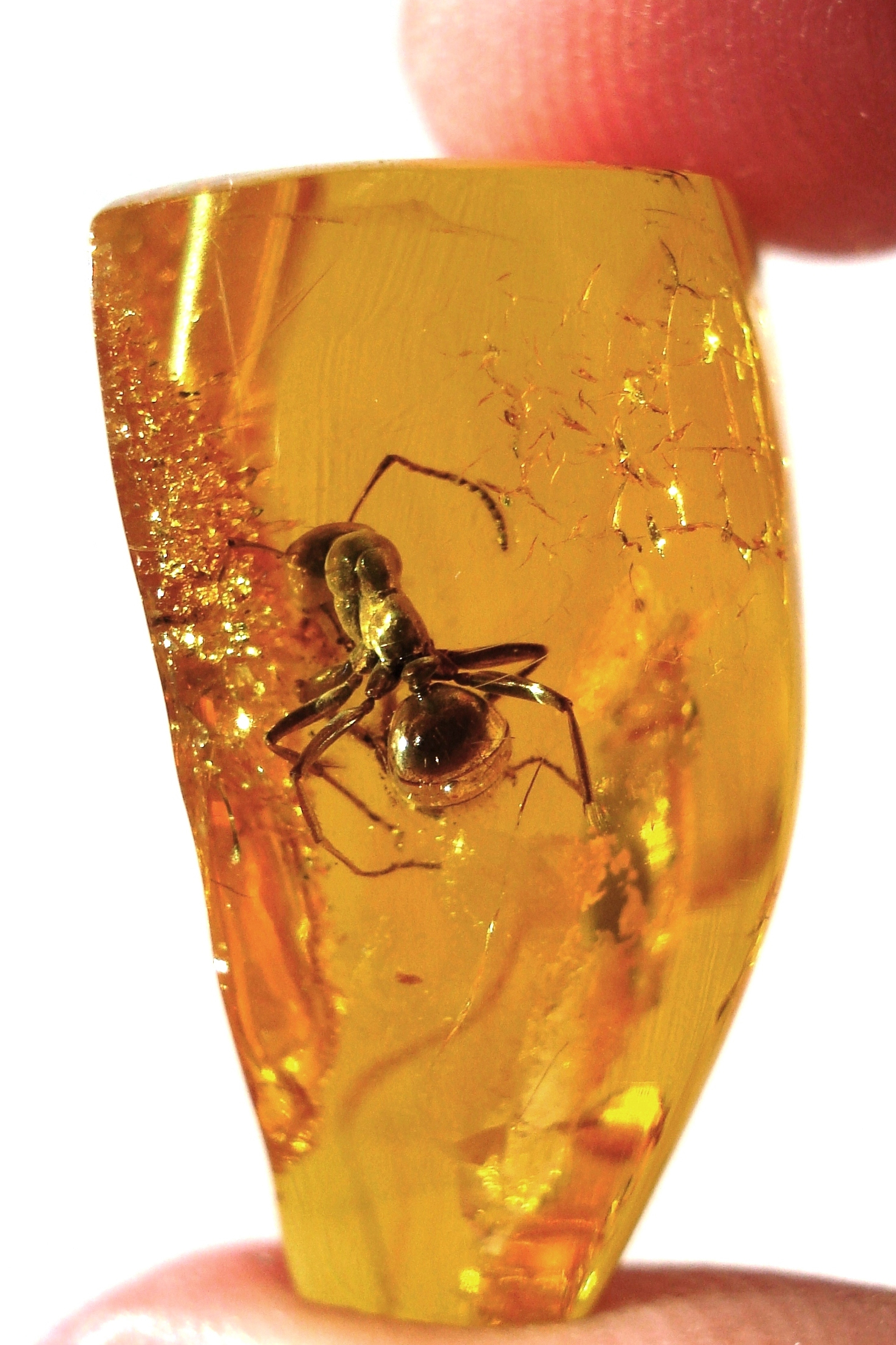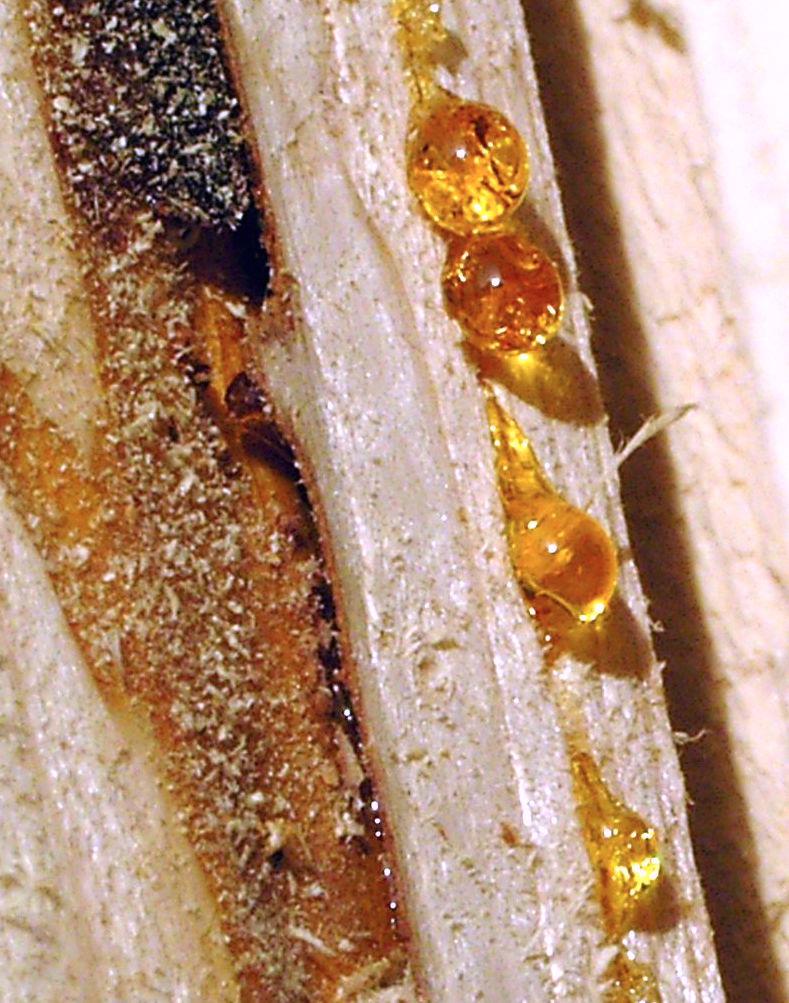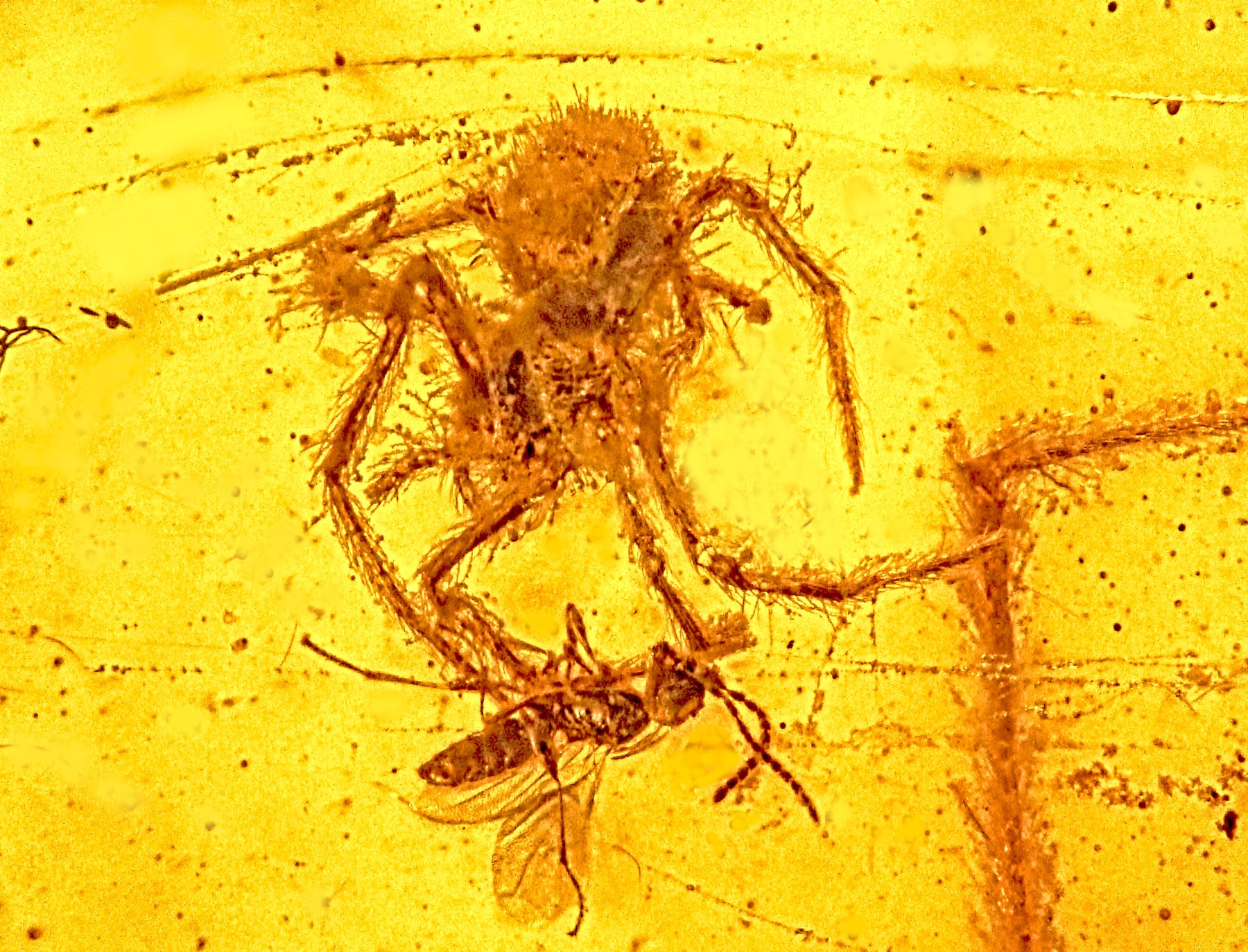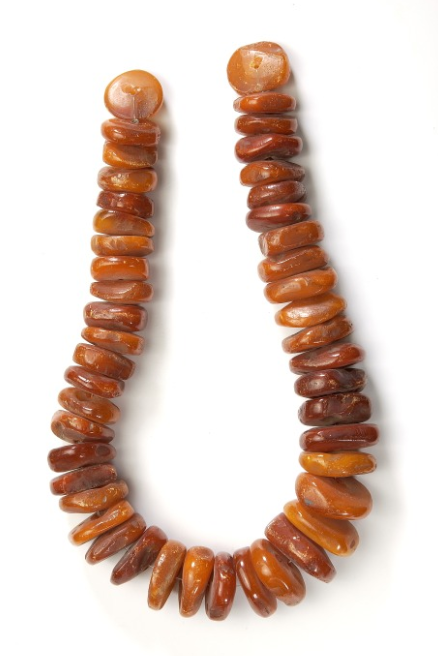
Credit: Anders L. Damgaard, CC BY-SA 4.0, via Wikimedia Commons
Background
Synopsis: Amber, or fossilized plant resin, has the incredible ability to preserve ancient life forms, from tiny insects often lost in the fossil record to feathers and even soft tissue of larger animals. This level of preservation has allowed scientists to study prehistoric specimens almost as if they were alive today.
- Amber may look like a gemstone but it isn’t a mineral. It’s an organic substance made from fossilized tree resin, which is especially valuable to scientists for its unique ability to preserve delicate structures. Amber even plays a prominent role in the Jurassic Park movies. What is it?
- As some plants are harmed, they secrete a substance called resin. This serves as protection against pathogens and pathogen carriers, such as insects.
- The resin hardens in the sun to block off the injury as it heals, like a scab. However, resin is incredibly sticky as it dries and can easily catch small creatures in it.
- Resin can sometimes drip onto the ground or into a water source, and then can be buried and fossilized, turning into amber, preserving anything trapped within it.
- These globs of fossil amber can take 40,000 years or more to form, and can include different kinds of insects and spiders, pieces of fungi or plants, microorganisms, or sometimes even part of a larger vertebrate animal.
- The oldest amber ever discovered is 320 million years old, found in Illinois, but most of the older pieces, including this oldest one, do not contain fossils.
- Most pieces of amber that contain some kind of fossil are 125 million years old or younger, except for a 230-million-year-old piece found in the Alps which contains a fly and two mites.

Droplets of sticky resin from a spruce tree that would become amber if fossilized.
Credit: Emmanuel Boutet, CC BY-SA 3.0, via Wikimedia Commons
This is the only fossil ever discovered that shows a spider attacking prey in its web. Preserved in amber, it's about 100 million years old.
Credit: Oregon State University, CC BY-SA 2.0, via Wikimedia Commons
- Amber can be found in many places all over the world, but it is most studied in a few specific mines.
- Baltic amber erodes out of the shore sediments of the Baltic Sea and contains many different fossils. These include a 54-million-year-old gecko, and the biggest flower fossil preserved in amber ever discovered. These flowers are rare as most of the fossils in this area are
- arthropods and include over 650 species of spiders.
- Dominican amber has produced over 150 species of spiders, a few anole lizards, and even a salamander. These pieces of amber are theorized to be between 20 and 15 million years old.
- Canadian amber is found in Alberta, and has contained over 130 fossil species, with conifer needles, aphids, and feathers of birds and dinosaurs found within the amber.
- Burmese amber is around 99 million years old and is found in Myanmar. Often used in the jewelry trade, Burmese amber preserves an incredibly wide variety of fossils, including the partial tail of a feathered dinosaur, and carnivorous ants, mid-meal.

Necklace of amber beads (2000-1000 BC) Origin: probably Baltic Sea region; discovered in Utrecht. National Museum of Antiquities, Leiden.
Credit: RMO - Rijks Museum voor Oudheden, Leiden, the Netherlands, CC BY-SA 3.0, via Wikimedia Commons
- One of the most unique finds in Burmese amber was the well-preserved partial body of a 99-million-year-old baby bird that includes the head, claws, skin and feathers.
- This bird, only a few days or weeks old, belongs to an avian group called the enantiornithines that went extinct about 65 million years ago along with the dinosaurs.
- A fossil this well preserved can provide new information about prehistoric, toothed birds and how they differ from modern birds.
- The baby bird, nicknamed “Belone,” has a full set of flight feathers in white, brown and dark gray. This has led to the hypothesis that these birds may hatch with the ability to fly, showing a different form of both parental care and independence.
- The rest of the feathers are sparse and are like those of a theropod dinosaur.
- The lack of parental care and slow growth rate made these birds vulnerable to predation. Many juvenile fossils have been found of enantiornithines while no juveniles from other birds of the Cretaceous period have been found.
- Feathers are common in amber, but what researchers found on them after five years of sifting through amber from Northern Myanmar certainly is not: a prehistoric insect resembling lice.
- Researchers found ten nymphs on a pair of feathers surrounded by amber. Thought to be 100 million years old, they strongly resemble modern day lice except for their antennae and the claws on their legs.
- The ancient bugs have a strong mandible for chewing and wingless bodies which leads to the belief that they are ancestors of modern lice.
- These insects are too small to be preserved in other types of fossil records, but amber preservation is so good that researchers claim it is almost like having live insects at their disposal.
- Close examination of the feathers revealed damage caused by the nymphs. The feathers are similar to those of other non-flying dinosaurs, but there is evidence that the lice were generalists and fed on both flightless and flying animals.
- Since there is such limited evidence of these parasites, their true population cannot be known, but it is believed they may have been as common as modern-day lice.
- An even rarer discovery was made while a researcher was looking at roundworms encased in amber and discovered a piece of the marine Trypanorhynch tapeworm.
- The 10 mm (about 3/8”) piece was a tentacle with hooks, unlike a smooth, flat roundworm, and was isolated in the amber with sand grains.
- Scientists speculate that an ancestor of sharks and rays beached on the shore and was eaten by another predator. The scavenger could have slung the intestines and loosened the tapeworm, causing it to hit a tree on the beach, getting caught in the resin.
- An isolated tapeworm is incredibly uncommon, as the soft-bodied parasites are not preserved well, and finding an entire body part is even more rare.
- The tentacle found is longer than the ones in modern marine tapeworms, so it is thought that the species shrunk over time, but researchers do not know why.
Episode script
Amber is a “gem” that’s often a window into the ancient past.
For thousands of years it’s been valued for its beauty, collected by humans and formed into jewelry and other treasures.
But amber is actually not a gemstone, or a mineral at all. It’s fossilized tree resin.
Trees secrete resin in reaction to damage. The resin hardens like a scab to seal the injury and protect the tree from disease. But while
it’s hardening, it’s extremely sticky and can trap pieces of plants, even small creatures within it.
Many of these are too delicate to be preserved in the fossil record, and are only available to scientists in amber.
Specimens have been found around the world. Amber erodes out of the Baltic seashore, and can be mined in Myanmar, Canada, the Dominican
Republic and many other places.
Collectors and researchers have found flies, spiders eating those flies, and mites clinging to the legs of those spiders. Lizards and
salamanders. Feathers from birds, and from dinosaurs.
Even a nearly entire baby bird, complete enough that researchers could study the structure and color of its skin and feathers -- even the lice that lived on them.
In fact, amber preserves tiny insects and arachnids almost like they’re modern specimens, allowing scientists to examine bugs that went extinct 100 million years ago as if they were alive today.
This makes amber not just a beautiful gem, but a valuable scientific tool.

